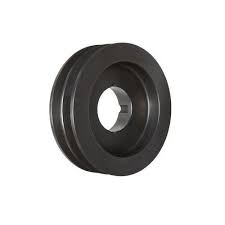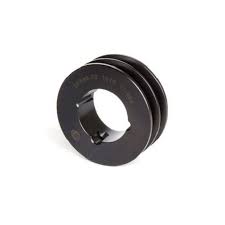Product Description
Product Description
Product Parameters
| product | European Standard Pulley SPA355-6-3535 with ISO9001 for derailleur |
| material | stainless steel , iron , aluminum ,bronze ,carbon steel ,brass etc . |
| size | ISO standard ,customer requirements |
| BORE | Finished bore, Pilot Bore, Special request |
| surface treatment | Carburizing and Quenching,Tempering ,Tooth suface high quenching Hardening,Tempering |
| Processing Method | Molding, Shaving, Hobbing, Drilling, Tapping, Reaming, Manual Chamfering, Grinding etc |
| Heat Treatment | Quenching & Tempering, Carburizing & Quenching, High-frequency Hardening, Carbonitriding…… |
| Package | Wooden Case/Container and pallet, or made-to-order |
| Certificate | ISO9001 ,SGS |
| Machining Process | Gear Hobbing, Gear Milling, Gear Shaping, Gear Broaching, Gear Shaving, Gear Grinding and Gear Lapping |
| Applications | Toy, Automotive, instrument, electrical equipment, household appliances, furniture, mechanical equipment,daily living equipment, electronic sports equipment, , sanitation machinery, market/ hotel equipment supplies, etc. |
| Testing Equipment | Rockwell hardness tester 500RA, Double mesh instrument HD-200B & 3102,Gear measurement center instrument CNC3906T and other High precision detection equipments |
workshop & equipment
Production process
Certifications
Our Advantages
1 . Prioritized Quality
2 .Integrity-based Management
3 .Service Orientation
4 .150+ advanced equipment
5 .10000+ square meter factory area
6 .200+ outstanding employees
7 .90% employees have more than 10 year- working experience in our factory
8 .36 technical staff
9 .certificate ISO 9001 , SGS
10 . Customization support
11 .Excellent after-sales service
shipping
sample orders delivery time:
10-15 working days as usual
15-20 working days in busy season
large order leading time :
20-30 working days as usual
30-40 working days in busy season
FAQ
1. why should you buy products from us not from other suppliers?
We are a 32 year-experience manufacturer on making the gear, specializing in manufacturing varieties of gears, such as helical gear ,bevel gear ,spur gear and grinding gear, gear shaft, timing pulley, rack, , timing pulley and other transmission parts . There are 150+ advanced equipment ,200+ excellent employees ,and 36 technical staff . what’s more ,we have got ISO9001 and SGS certificate .
2: What are the common types of tooth profiles for synchronous belt pulleys?
A: The most common tooth profiles for synchronous belt pulleys are the trapezoidal (or T-type) and curvilinear (or HTD-type) profiles. The tooth profile determines the pitch diameter, which affects the overall ratio of the gear drive.
3 .How long is the delivery?
A: Small orders usually takes 10-15 working days,big order usually 20-35 days, depending on orders quantity and whether are standard size.
| Certification: | ISO |
|---|---|
| Pulley Sizes: | Type F |
| Manufacturing Process: | Forging |
| Material: | Stainless Steel |
| Surface Treatment: | Electroplating |
| Application: | Chemical Industry, Grain Transport, Mining Transport, Power Plant |
| Samples: |
US$ 5/Piece
1 Piece(Min.Order) | |
|---|
| Customization: |
Available
| Customized Request |
|---|

What safety considerations should be kept in mind when dealing with spa pulleys?
When dealing with spa pulleys, several safety considerations should be kept in mind to prevent accidents and ensure the well-being of individuals involved. Here’s a detailed explanation of the safety considerations:
1. Power Disconnection:
Before working on or near spa pulleys, ensure that the power to the spa equipment is completely disconnected. This prevents accidental starting of the motor or any unexpected movement of the pulleys. Turn off the power supply at the circuit breaker or switch and verify that there is no electrical power flowing to the spa system.
2. Lockout/Tagout Procedures:
When performing maintenance or repair tasks on the spa pulleys, follow proper lockout/tagout procedures. Lockout/tagout involves securing the power source with a lock or tag, preventing unauthorized re-energization of the equipment while work is being carried out. This helps to protect individuals from accidental activation of the spa system and ensures their safety during maintenance activities.
3. Personal Protective Equipment (PPE):
Wear appropriate personal protective equipment (PPE) when dealing with spa pulleys. This may include safety glasses or goggles to protect the eyes from debris or flying particles, gloves to provide hand protection, and any other necessary protective gear based on the specific task and potential hazards involved. PPE helps minimize the risk of injuries and enhances personal safety.
4. Proper Training and Knowledge:
Ensure that individuals working with spa pulleys have received proper training and possess the necessary knowledge and skills to perform the tasks safely. They should be familiar with the spa equipment, understand the potential hazards associated with pulley operations, and know the correct procedures for installation, maintenance, and repair. Proper training helps minimize the risk of accidents and ensures that work is carried out in a safe and competent manner.
5. Equipment Inspection:
Prior to any work involving spa pulleys, inspect the equipment for any signs of wear, damage, or malfunction. Ensure that the pulleys are in good condition, free from cracks, excessive wear, or any other issues that may compromise their integrity or performance. Address any identified problems before proceeding with the task to avoid potential accidents or failure during operation.
6. Proper Installation and Alignment:
During installation or replacement of spa pulleys, ensure that they are properly installed and aligned. Follow the manufacturer’s instructions and specifications for proper pulley installation, including the correct alignment, tensioning, and fastening procedures. Improper installation or misalignment can lead to premature wear, reduced performance, or unexpected pulley failures, which can pose safety hazards.
7. Regular Maintenance:
Incorporate regular maintenance of spa pulleys into the overall spa maintenance routine. This includes tasks such as cleaning, lubricating, and inspecting the pulleys for wear or damage. Regular maintenance helps identify and address any potential safety concerns, ensuring that the pulleys continue to function properly and safely.
8. Professional Assistance:
If you are unsure about any aspect of dealing with spa pulleys or if the task requires specialized knowledge or expertise, seek professional assistance. A spa technician or a qualified professional can provide guidance, perform the necessary maintenance or repair tasks, and ensure that safety protocols are followed.
In summary, when dealing with spa pulleys, it is important to prioritize safety. This includes disconnecting power, following lockout/tagout procedures, wearing appropriate PPE, receiving proper training, inspecting equipment, ensuring proper installation and alignment, conducting regular maintenance, and seeking professional assistance when needed. By adhering to these safety considerations, the risk of accidents or injuries associated with spa pulleys can be minimized, promoting a safe working environment for all individuals involved.

Can spa pulleys withstand exposure to moisture and chemicals used in spas?
Spa pulleys are designed to withstand exposure to moisture and chemicals commonly used in spas. Here’s a detailed explanation:
1. Moisture Resistance:
Spa pulleys are typically constructed using materials that are resistant to moisture. Common materials used for spa pulleys include corrosion-resistant metals such as stainless steel or aluminum, as well as various types of plastics or polymers. These materials have inherent resistance to moisture and are less prone to rust or degradation when exposed to water or high humidity levels in the spa environment.
2. Chemical Compatibility:
Spas often use a variety of chemicals, such as sanitizers, pH adjusters, and water clarifiers, to maintain water quality. Spa pulleys are designed to withstand exposure to these chemicals without experiencing significant degradation or damage. The materials selected for spa pulleys are chosen for their chemical resistance properties. They are tested and chosen to ensure compatibility with the specific chemicals used in spas, reducing the risk of chemical-induced deterioration or failure.
3. Sealed and Protected Design:
Spa pulleys may incorporate design features that provide additional protection against moisture and chemical exposure. For example, pulleys may have sealed bearings or sealed housings to prevent water or chemicals from directly accessing critical components. This helps to prolong the lifespan of the pulleys and maintain their performance even in the presence of moisture or chemicals.
4. Regular Maintenance:
While spa pulleys are designed to withstand exposure to moisture and chemicals, regular maintenance is still necessary to ensure their longevity. This includes proper cleaning, inspection, and lubrication of the pulleys. Cleaning helps remove any accumulated debris or chemical residues that may affect the pulley’s performance. Regular inspection allows for early detection of any signs of wear or damage, enabling timely maintenance or replacement. Lubrication helps to reduce friction and wear, improving the overall performance and lifespan of the pulleys.
5. Manufacturer Recommendations:
It’s important to follow the manufacturer’s recommendations regarding the use and maintenance of spa pulleys. Manufacturers often provide specific guidelines on the materials used, maintenance procedures, and any limitations or precautions related to moisture and chemical exposure. Adhering to these recommendations ensures the pulleys perform optimally and withstand the spa environment effectively.
In summary, spa pulleys are designed to withstand exposure to moisture and chemicals used in spas. They are constructed using materials that are resistant to moisture and compatible with the chemicals commonly found in spas. Additionally, their design may incorporate features that provide extra protection against moisture and chemical exposure. Regular maintenance and following manufacturer recommendations are essential to ensure the longevity and reliable performance of spa pulleys in the spa environment.

What types of belts or cables are typically employed with spa pulleys?
When it comes to spa pulleys, different types of belts or cables can be employed depending on the specific application and design of the system. Here’s a detailed explanation of the typical types of belts or cables that are commonly used with spa pulleys:
1. V-Belts:
V-belts are one of the most commonly employed types of belts with spa pulleys. They have a trapezoidal cross-section and are designed to fit into the grooves or notches present on the surface of the pulley. V-belts offer excellent grip and traction, allowing for efficient power transfer between the pulley and the driven component, such as the pump impeller or blower fan. They are flexible, durable, and suitable for moderate to high power transmission applications.
2. Timing Belts:
Timing belts, also known as synchronous belts, are toothed belts that feature teeth on the inner surface. These teeth fit into the corresponding grooves or teeth on the pulley’s surface, ensuring precise and synchronous power transmission. Timing belts are commonly used in applications that require accurate timing and positioning, such as controlling the rotation of the pump impeller or other components. They are known for their low noise, high efficiency, and resistance to slipping.
3. Flat Belts:
Flat belts, as the name suggests, have a flat surface and are typically made of materials like rubber or synthetic materials. Although less common in modern spa and hot tub systems, they may still be employed in certain applications. Flat belts are flexible, easy to install, and suitable for low power transmission requirements. However, they may have limitations in terms of grip and power transfer efficiency compared to V-belts or timing belts.
4. Cables:
In some spa and hot tub systems, particularly those with pulley-driven mechanical control systems, cables may be employed instead of belts. These cables are typically made of steel or other strong materials and are used to transmit linear motion or tension between the pulley and the component being controlled. For example, cables may be used to control the opening and closing of valves or the adjustment of water flow. The use of cables provides flexibility and precise control over the movement of components.
It’s important to note that the specific type of belt or cable employed with spa pulleys may depend on factors such as the manufacturer’s specifications, system design, load requirements, and intended application. Consulting the system’s documentation or contacting the manufacturer will provide accurate information on the recommended type of belt or cable to be used with a particular spa pulley.


editor by CX
2023-10-04